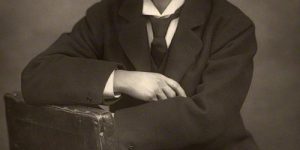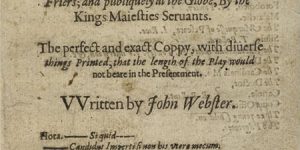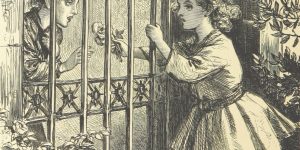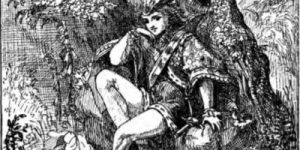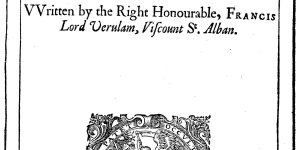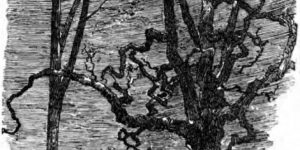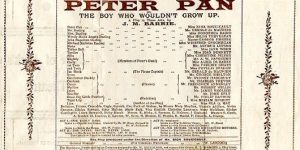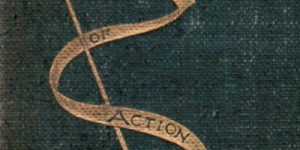The Great Boer War by Arthur Conan Doyle
The Great Boer War Preface To The Final Edition
The Great Boer War Chapter I. The Boer Nations
The Great Boer War Chapter II. The Cause Of Quarrel
The Great Boer War Chapter III. The Negotiations
The Great Boer War Chapter IV. The Eve Of War
The Great Boer War Chapter V. Talana Hill
The Great Boer War Chapter VI. Elandslaagte And Rietfontein
The Great Boer War Chapter VII. The Battle Of Ladysmith
The Great Boer War Chapter VIII. Lord Methuen’s Advance
The Great Boer War Chapter IX. Battle Of Magersfontein
The Great Boer War Chapter X. The Battle Of Stormberg
The Great Boer War Chapter XI. Battle Of Colenso
The Great Boer War Chapter XII. The Dark Hour
The Great Boer War Chapter XIII. The Siege Of Ladysmith
The Great Boer War Chapter XIV. The Colesberg Operations
The Great Boer War Chapter XV. Spion Kop
The Great Boer War Chapter XVI. Vaalkranz
The Great Boer War Chapter XVII. Buller’s Final Advance
The Great Boer War Chapter XVIII. The Siege And Relief Of Kimberley
The Great Boer War Chapter XIX. Paardeberg
The Great Boer War Chapter XX. Roberts’s Advance On Bloemfontein
The Great Boer War Chapter XXI. Strategic Effects Of Lord Roberts’s March
The Great Boer War Chapter XXII. The Halt At Bloemfontein
The Great Boer War Chapter XXIII. The Clearing Of The South-East
The Great Boer War Chapter XXIV. The Siege Of Mafeking
The Great Boer War Chapter XXV. The March On Pretoria
The Great Boer War Chapter XXVI. Diamond Hill—Rundle’s Operations
The Great Boer War Chapter XXVII. The Lines Of Communication
The Great Boer War Chapter XXVIII. The Halt At Pretoria
The Great Boer War Chapter XXIX. The Advance To Komatipoort
The Great Boer War Chapter XXX. The Campaign Of De Wet
The Great Boer War Chapter XXXI. The Guerilla Warfare In The Transvaal: Nooitgedacht
The Great Boer War Chapter XXXII. The Second Invasion Of Cape Colony
The Great Boer War Chapter XXXIII. The Northern Operations From January To April, 1901
The Great Boer War Chapter XXXIV. The Winter Campaign (April To September, 1901)
The Great Boer War Chapter XXXV. The Guerilla Operations In Cape Colony
The Great Boer War Chapter XXXVI. The Spring Campaign (September To December, 1901)
The Great Boer War Chapter XXXVII. The Campaign Of January To April, 1902
The Great Boer War Chapter XXXVIII. De La Rey’s Campaign Of 1902
The Great Boer War Chapter XXXIX. The End
The Great Boer War Chapter XXV. The March On Pretoria
In the early days of May, when the season of the rains was past and the veld was green, Lord Roberts’s six weeks of enforced inaction came to an end. He had gathered himself once more for one of those tiger springs which should be as sure and as irresistible as that which had brought him from Belmont to Bloemfontein, or that other in olden days which had carried him from Cabul to Candahar. His army had been decimated by sickness, and eight thousand men had passed into the hospitals; but those who were with the colours were of high heart, longing eagerly for action. Any change which would carry them away from the pest-ridden, evil-smelling capital which had revenged itself so terribly upon the invader must be a change for the better. Therefore it was with glad faces and brisk feet that the centre column left Bloemfontein on May 1st, and streamed, with bands playing, along the northern road.
On May 3rd the main force was assembled at Karee, twenty miles upon their way. Two hundred and twenty separated them from Pretoria, but in little more than a month from the day of starting, in spite of broken railway, a succession of rivers, and the opposition of the enemy, this army was marching into the main street of the Transvaal capital. Had there been no enemy there at all, it would still have been a fine performance, the more so when one remembers that the army was moving upon a front of twenty miles or more, each part of which had to be co-ordinated to the rest. It is with the story of this great march that the present chapter deals.
Roberts had prepared the way by clearing out the south-eastern corner of the State, and at the moment of his advance his forces covered a semicircular front of about forty miles, the right under Ian Hamilton near Thabanchu, and the left at Karee. This was the broad net which was to be swept from south to north across the Free State, gradually narrowing as it went. The conception was admirable, and appears to have been an adoption of the Boers’ own strategy, which had in turn been borrowed from the Zulus. The solid centre could hold any force which faced it, while the mobile flanks, Hutton upon the left and Hamilton upon the right, could lap round and pin it, as Cronje was pinned at Paardeberg. It seems admirably simple when done upon a small scale. But when the scale is one of forty miles, since your front must be broad enough to envelop the front which is opposed to it, and when the scattered wings have to be fed with no railway line to help, it takes such a master of administrative detail as Lord Kitchener to bring the operations to complete success.
On May 3rd, the day of the advance from our most northern post, Karee, the disposition of Lord Roberts’s army was briefly as follows. On his left was Hutton, with his mixed force of mounted infantry drawn from every quarter of the empire. This formidable and mobile body, with some batteries of horse artillery and of pom-poms, kept a line a few miles to the west of the railroad, moving northwards parallel with it. Roberts’s main column kept on the railroad, which was mended with extraordinary speed by the Railway Pioneer regiment and the Engineers, under Girouard and the ill-fated Seymour. It was amazing to note the shattered culverts as one passed, and yet to be overtaken by trains within a day. This main column consisted of Pole-Carew’s 11th Division, which contained the Guards, and Stephenson’s Brigade (Warwicks, Essex, Welsh, and Yorkshires). With them were the 83rd, 84th, and 85th R.F.A., with the heavy guns, and a small force of mounted infantry. Passing along the widespread British line one would then, after an interval of seven or eight miles, come upon Tucker’s Division (the 7th), which consisted of Maxwell’s Brigade (formerly Chermside’s—the Norfolks, Lincolns, Hampshires, and Scottish Borderers) and Wavell’s Brigade (North Staffords, Cheshires, East Lancashires, South Wales Borderers). To the right of these was Ridley’s mounted infantry. Beyond them, extending over very many miles of country and with considerable spaces between, there came Broadwood’s cavalry, Bruce Hamilton’s Brigade (Derbyshires, Sussex, Camerons, and C.I.V.), and finally on the extreme right of all Ian Hamilton’s force of Highlanders, Canadians, Shropshires, and Cornwalls, with cavalry and mounted infantry, starting forty miles from Lord Roberts, but edging westwards all the way, to merge with the troops next to it, and to occupy Winburg in the way already described. This was the army, between forty and fifty thousand strong, with which Lord Roberts advanced upon the Transvaal.
In the meantime he had anticipated that his mobile and enterprising opponents would work round and strike at our rear. Ample means had been provided for dealing with any attempt of the kind. Rundle with the 8th Division and Brabant’s Colonial Division remained in rear of the right flank to confront any force which might turn it. At Bloemfontein were Kelly-Kenny’s Division (the 6th) and Chermside’s (the 3rd), with a force of cavalry and guns. Methuen, working from Kimberley towards Boshof, formed the extreme left wing of the main advance, though distant a hundred miles from it. With excellent judgment Lord Roberts saw that it was on our right flank that danger was to be feared, and here it was that every precaution had been taken to meet it.
The objective of the first day’s march was the little town of Brandfort, ten miles north of Karee. The head of the main column faced it, while the left arm swept round and drove the Boer force from their position. Tucker’s Division upon the right encountered some opposition, but overbore it with artillery. May 4th was a day of rest for the infantry, but on the 5th they advanced, in the same order as before, for twenty miles, and found themselves to the south of the Vet River, where the enemy had prepared for an energetic resistance. A vigorous artillery duel ensued, the British guns in the open as usual against an invisible enemy. After three hours of a very hot fire the mounted infantry got across the river upon the left and turned the Boer flank, on which they hastily withdrew. The first lodgment was effected by two bodies of Canadians and New Zealanders, who were energetically supported by Captain Anley’s 3rd Mounted Infantry. The rushing of a kopje by twenty-three West Australians was another gallant incident which marked this engagement, in which our losses were insignificant. A maxim and twenty or thirty prisoners were taken by Hutton’s men. The next day (May 6th) the army moved across the difficult drift of the Vet River, and halted that night at Smaldeel, some five miles to the north of it. At the same time Ian Hamilton had been able to advance to Winburg, so that the army had contracted its front by about half, but had preserved its relative positions. Hamilton, after his junction with his reinforcements at Jacobsrust, had under him so powerful a force that he overbore all resistance. His actions between Thabanchu and Winburg had cost the Boers heavy loss, and in one action the German legion had been overthrown. The informal warfare which was made upon us by citizens of many nations without rebuke from their own Governments is a matter of which pride, and possibly policy, have forbidden us to complain, but it will be surprising if it does not prove that their laxity has established a very dangerous precedent, and they will find it difficult to object when, in the next little war in which either France or Germany is engaged, they find a few hundred British adventurers carrying a rifle against them.
The record of the army’s advance is now rather geographical than military, for it rolled northwards with never a check save that which was caused by the construction of the railway diversions which atoned for the destruction of the larger bridges. The infantry now, as always in the campaign, marched excellently; for though twenty miles in the day may seem a moderate allowance to a healthy man upon an English road, it is a considerable performance under an African sun with a weight of between thirty and forty pounds to be carried. The good humour of the men was admirable, and they eagerly longed to close with the elusive enemy who flitted ever in front of them. Huge clouds of smoke veiled the northern sky, for the Boers had set fire to the dry grass, partly to cover their own retreat, and partly to show up our khaki upon the blackened surface. Far on the flanks the twinkling heliographs revealed the position of the wide-spread wings.
On May 10th Lord Roberts’s force, which had halted for three days at Smaldeel, moved onwards to Welgelegen. French’s cavalry had come up by road, and quickly strengthened the centre and left wing of the army. On the morning of the 10th the invaders found themselves confronted by a formidable position which the Boers had taken up on the northern bank of the Sand River. Their army extended over twenty miles of country, the two Bothas were in command, and everything pointed to a pitched battle. Had the position been rushed from the front, there was every material for a second Colenso, but the British had learned that it was by brains rather than by blood that such battles may be won. French’s cavalry turned the Boers on one side, and Bruce Hamilton’s infantry on the other. Theoretically we never passed the Boer flanks, but practically their line was so over-extended that we were able to pierce it at any point. There was never any severe fighting, but rather a steady advance upon the British side and a steady retirement upon that of the Boers. On the left the Sussex regiment distinguished itself by the dash with which it stormed an important kopje. The losses were slight, save among a detached body of cavalry which found itself suddenly cut off by a strong force of the enemy and lost Captain Elworthy killed, and Haig of the Inniskillings, Wilkinson of the Australian Horse, and twenty men prisoners. We also secured forty or fifty prisoners, and the enemy’s casualties amounted to about as many more. The whole straggling action fought over a front as broad as from London to Woking cost the British at the most a couple of hundred casualties, and carried their army over the most formidable defensive position which they were to encounter. The war in its later phases certainly has the pleasing characteristic of being the most bloodless, considering the number of men engaged and the amount of powder burned, that has been known in history. It was at the expense of their boots and not of their lives that the infantry won their way.
On May 11th Lord Roberts’s army advanced twenty miles to Geneva Siding, and every preparation was made for a battle next day, as it was thought certain that the Boers would defend their new capital, Kroonstad. It proved, however, that even here they would not make a stand, and on May 12th, at one o’clock, Lord Roberts rode into the town. Steyn, Botha, and De Wet escaped, and it was announced that the village of Lindley had become the new seat of government. The British had now accomplished half their journey to Pretoria, and it was obvious that on the south side of the Vaal no serious resistance awaited them. Burghers were freely surrendering themselves with their arms, and returning to their farms. In the south-east Rundle and Brabant were slowly advancing, while the Boers who faced them fell back towards Lindley. On the west, Hunter had crossed the Vaal at Windsorton, and Barton’s Fusilier Brigade had fought a sharp action at Rooidam, while Mahon’s Mafeking relief column had slipped past their flank, escaping the observation of the British public, but certainly not that of the Boers. The casualties in the Rooidam action were nine killed and thirty wounded, but the advance of the Fusiliers was irresistible, and for once the Boer loss, as they were hustled from kopje to kopje, appears to have been greater than that of the British. The Yeomanry had an opportunity of showing once more that there are few more high-mettled troops in South Africa than these good sportsmen of the shires, who only showed a trace of their origin in their irresistible inclination to burst into a ‘tally-ho!’ when ordered to attack. The Boer forces fell back after the action along the line of the Vaal, making for Christiana and Bloemhof. Hunter entered into the Transvaal in pursuit of them, being the first to cross the border, with the exception of raiding Rhodesians early in the war. Methuen, in the meanwhile, was following a course parallel to Hunter but south of him, Hoopstad being his immediate objective. The little union jacks which were stuck in the war maps in so many British households were now moving swiftly upwards.
Buller’s force was also sweeping northwards, and the time had come when the Ladysmith garrison, restored at last to health and strength, should have a chance of striking back at those who had tormented them so long. Many of the best troops had been drafted away to other portions of the seat of war. Hart’s Brigade and Barton’s Fusilier Brigade had gone with Hunter to form the 10th Division upon the Kimberley side, and the Imperial Light Horse had been brought over for the relief of Mafeking. There remained, however, a formidable force, the regiments in which had been strengthened by the addition of drafts and volunteers from home. Not less than twenty thousand sabres and bayonets were ready and eager for the passage of the Biggarsberg mountains.
This line of rugged hills is pierced by only three passes, each of which was held in strength by the enemy. Considerable losses must have ensued from any direct attempt to force them. Buller, however, with excellent judgment, demonstrated in front of them with Hildyard’s men, while the rest of the army, marching round, outflanked the line of resistance, and on May 15th pounced upon Dundee. Much had happened since that October day when Penn Symons led his three gallant regiments up Talana Hill, but now at last, after seven weary months, the ground was reoccupied which he had gained. His old soldiers visited his grave, and the national flag was raised over the remains of as gallant a man as ever died for the sake of it.
The Boers, whose force did not exceed a few thousands, were now rolled swiftly back through Northern Natal into their own country. The long strain at Ladysmith had told upon them, and the men whom we had to meet were very different from the warriors of Spion Kop and Nicholson’s Nek. They had done magnificently, but there is a limit to human endurance, and no longer would these peasants face the bursting lyddite and the bayonets of angry soldiers. There is little enough for us to boast of in this. Some pride might be taken in the campaign when at a disadvantage we were facing superior numbers, but now we could but deplore the situation in which these poor valiant burghers found themselves, the victims of a rotten government and of their own delusions. Hofer’s Tyrolese, Charette’s Vendeans, or Bruce’s Scotchmen never fought a finer fight than these children of the veld, but in each case they combated a real and not an imaginary tyrant. It is heart-sickening to think of the butchery, the misery, the irreparable losses, the blood of men, and the bitter tears of women, all of which might have been spared had one obstinate and ignorant man been persuaded to allow the State which he ruled to conform to the customs of every other civilised State upon the earth.
Buller was now moving with a rapidity and decision which contrast pleasantly with some of his earlier operations. Although Dundee was only occupied on May 15th, on May 18th his vanguard was in Newcastle, fifty miles to the north. In nine days he had covered 138 miles. On the 19th the army lay under the loom of that Majuba which had cast its sinister shadow for so long over South African politics. In front was the historical Laing’s Nek, the pass which leads from Natal into the Transvaal, while through it runs the famous railway tunnel. Here the Boers had taken up that position which had proved nineteen years before to be too strong for British troops. The Rooineks had come back after many days to try again. A halt was called, for the ten days’ supplies which had been taken with the troops were exhausted, and it was necessary to wait until the railway should be repaired. This gave time for Hildyard’s 5th Division and Lyttelton’s 4th Division to close up on Clery’s 2nd Division, which with Dundonald’s cavalry had formed our vanguard throughout. The only losses of any consequence during this fine march fell upon a single squadron of Bethune’s mounted infantry, which being thrown out in the direction of Vryheid, in order to make sure that our flank was clear, fell into an ambuscade and was almost annihilated by a close-range fire. Sixty-six casualties, of which nearly half were killed, were the result of this action, which seems to have depended, like most of our reverses, upon defective scouting. Buller, having called up his two remaining divisions and having mended the railway behind him, proceeded now to manoeuvre the Boers out of Laing’s Nek exactly as he had manoeuvred them out of the Biggarsberg. At the end of May Hildyard and Lyttelton were despatched in an eastern direction, as if there were an intention of turning the pass from Utrecht.
It was on May 12th that Lord Roberts occupied Kroonstad, and he halted there for eight days before he resumed his advance. At the end of that time his railway had been repaired, and enough supplies brought up to enable him to advance again without anxiety. The country through which he passed swarmed with herds and flocks, but, with as scrupulous a regard for the rights of property as Wellington showed in the south of France, no hungry soldier was allowed to take so much as a chicken as he passed. The punishment for looting was prompt and stern. It is true that farms were burned occasionally and the stock confiscated, but this was as a punishment for some particular offence and not part of a system. The limping Tommy looked askance at the fat geese which covered the dam by the roadside, but it was as much as his life was worth to allow his fingers to close round those tempting white necks. On foul water and bully beef he tramped through a land of plenty.
Lord Roberts’s eight days’ halt was spent in consolidating the general military situation. We have already shown how Buller had crept upwards to the Natal Border. On the west Methuen reached Hoopstad and Hunter Christiana, settling the country and collecting arms as they went. Rundle in the south-east took possession of the rich grain lands, and on May 21st entered Ladybrand. In front of him lay that difficult hilly country about Senekal, Ficksburg, and Bethlehem which was to delay him so long. Ian Hamilton was feeling his way northwards to the right of the railway line, and for the moment cleared the district between Lindley and Heilbron, passing through both towns and causing Steyn to again change his capital, which became Vrede, in the extreme north-east of the State. During these operations Hamilton had the two formidable De Wet brothers in front of him, and suffered nearly a hundred casualties in the continual skirmishing which accompanied his advance. His right flank and rear were continually attacked, and these signs of forces outside our direct line of advance were full of menace for the future.
On May 22nd the main army resumed its advance, moving forward fifteen miles to Honing’s Spruit. On the 23rd another march of twenty miles over a fine rolling prairie brought them to Rhenoster River. The enemy had made some preparations for a stand, but Hamilton was near Heilbron upon their left and French was upon their right flank. The river was crossed without opposition. On the 24th the army was at Vredefort Road, and on the 26th the vanguard crossed the Vaal River at Viljoen’s Drift, the whole army following on the 27th. Hamilton’s force had been cleverly swung across from the right to the left flank of the British, so that the Boers were massed on the wrong side.
Preparations for resistance had been made on the line of the railway, but the wide turning movements on the flanks by the indefatigable French and Hamilton rendered all opposition of no avail. The British columns flowed over and onwards without a pause, tramping steadily northwards to their destination. The bulk of the Free State forces refused to leave their own country, and moved away to the eastern and northern portion of the State, where the British Generals thought—incorrectly, as the future was to prove—that no further harm would come from them. The State which they were in arms to defend had really ceased to exist, for already it had been publicly proclaimed at Bloemfontein in the Queen’s name that the country had been annexed to the Empire, and that its style henceforth was that of ‘The Orange River Colony.’ Those who think this measure unduly harsh must remember that every mile of land which the Freestaters had conquered in the early part of the war had been solemnly annexed by them. At the same time, those Englishmen who knew the history of this State, which had once been the model of all that a State should be, were saddened by the thought that it should have deliberately committed suicide for the sake of one of the most corrupt governments which have ever been known. Had the Transvaal been governed as the Orange Free State was, such an event as the second Boer war could never have occurred.
Lord Roberts’s tremendous march was now drawing to a close. On May 28th the troops advanced twenty miles, and passed Klip River without fighting. It was observed with surprise that the Transvaalers were very much more careful of their own property than they had been of that of their allies, and that the railway was not damaged at all by the retreating forces. The country had become more populous, and far away upon the low curves of the hills were seen high chimneys and gaunt iron pumps which struck the north of England soldier with a pang of homesickness. This long distant hill was the famous Rand, and under its faded grasses lay such riches as Solomon never took from Ophir. It was the prize of victory; and yet the prize is not to the victor, for the dust-grimed officers and men looked with little personal interest at this treasure-house of the world. Not one penny the richer would they be for the fact that their blood and their energy had brought justice and freedom to the gold fields. They had opened up an industry for the world, men of all nations would be the better for their labours, the miner and the financier or the trader would equally profit by them, but the men in khaki would tramp on, unrewarded and uncomplaining, to India, to China, to any spot where the needs of their worldwide empire called them.
The infantry, streaming up from the Vaal River to the famous ridge of gold, had met with no resistance upon the way, but great mist banks of cloud by day and huge twinkling areas of flame by night showed the handiwork of the enemy. Hamilton and French, moving upon the left flank, found Boers thick upon the hills, but cleared them off in a well-managed skirmish which cost us a dozen casualties. On May 29th, pushing swiftly along, French found the enemy posted very strongly with several guns at Doornkop, a point west of Klip River Berg. The cavalry leader had with him at this stage three horse batteries, four pom-poms, and 3000 mounted men. The position being too strong for him to force, Hamilton’s infantry (19th and 21st Brigades) were called up, and the Boers were driven out. That splendid corps, the Gordons, lost nearly a hundred men in their advance over the open, and the C.I.V.s on the other flank fought like a regiment of veterans. There had been an inclination to smile at these citizen soldiers when they first came out, but no one smiled now save the General who felt that he had them at his back. Hamilton’s attack was assisted by the menace rather than the pressure of French’s turning movement on the Boer right, but the actual advance was as purely frontal as any of those which had been carried through at the beginning of the war. The open formation of the troops, the powerful artillery behind them, and perhaps also the lowered morale of the enemy combined to make such a movement less dangerous than of old. In any case it was inevitable, as the state of Hamilton’s commisariat rendered it necessary that at all hazards he should force his way through.
Whilst this action of Doornkop was fought by the British left flank, Henry’s mounted infantry in the centre moved straight upon the important junction of Germiston, which lies amid the huge white heaps of tailings from the mines. At this point, or near it, the lines from Johannesburg and from Natal join the line to Pretoria. Colonel Henry’s advance was an extremely daring one, for the infantry were some distance behind; but after an irregular scrambling skirmish, in which the Boer snipers had to be driven off the mine heaps and from among the houses, the 8th mounted infantry got their grip of the railway and held it. The exploit was a very fine one, and stands out the more brilliantly as the conduct of the campaign cannot be said to afford many examples of that well-considered audacity which deliberately runs the risk of the minor loss for the sake of the greater gain. Henry was much assisted by J battery R.H.A., which was handled with energy and judgment.
French was now on the west of the town, Henry had cut the railway on the east, and Roberts was coming up from the south. His infantry had covered 130 miles in seven days, but the thought that every step brought them nearer to Pretoria was as exhilarating as their fifes and drums. On May 30th the victorious troops camped outside the city while Botha retired with his army, abandoning without a battle the treasure-house of his country. Inside the town were chaos and confusion. The richest mines in the world lay for a day or more at the mercy of a lawless rabble drawn from all nations. The Boer officials were themselves divided in opinion, Krause standing for law and order while Judge Koch advocated violence. A spark would have set the town blazing, and the worst was feared when a crowd of mercenaries assembled in front of the Robinson mine with threats of violence. By the firmness and tact of Mr. Tucker, the manager, and by the strong attitude of Commissioner Krause, the situation was saved and the danger passed. Upon May 31st, without violence to life or destruction to property, that great town which British hands have done so much to build found itself at last under the British flag. May it wave there so long as it covers just laws, honest officials, and clean-handed administrators—so long and no longer!
And now the last stage of the great journey had been reached. Two days were spent at Johannesburg while supplies were brought up, and then a move was made upon Pretoria thirty miles to the north. Here was the Boer capital, the seat of government, the home of Kruger, the centre of all that was anti-British, crouching amid its hills, with costly forts guarding every face of it. Surely at last the place had been found where that great battle should be fought which should decide for all time whether it was with the Briton or with the Dutchman that the future of South Africa lay.
On the last day of May two hundred Lancers under the command of Major Hunter Weston, with Charles of the Sappers and Burnham the scout, a man who has played the part of a hero throughout the campaign, struck off from the main army and endeavoured to descend upon the Pretoria to Delagoa railway line with the intention of blowing up a bridge and cutting the Boer line of retreat. It was a most dashing attempt; but the small party had the misfortune to come into contact with a strong Boer commando, who headed them off. After a skirmish they were compelled to make their way back with a loss of five killed and fourteen wounded.
The cavalry under French had waited for the issue of this enterprise at a point nine miles north of Johannesburg. On June 2nd it began its advance with orders to make a wide sweep round to the westward, and so skirt the capital, cutting the Pietersburg railway to the north of it. The country in the direct line between Johannesburg and Pretoria consists of a series of rolling downs which are admirably adapted for cavalry work, but the detour which French had to make carried him into the wild and broken district which lies to the north of the Little Crocodile River. Here he was fiercely attacked on ground where his troops could not deploy, but with extreme coolness and judgment beat off the enemy. To cover thirty-two miles in a day and fight a way out of an ambuscade in the evening is an ordeal for any leader and for any troops. Two killed and seven wounded were our trivial losses in a situation which might have been a serious one. The Boers appear to have been the escort of a strong convoy which had passed along the road some miles in front. Next morning both convoy and opposition had disappeared. The cavalry rode on amid a country of orange groves, the troopers standing up in their stirrups to pluck the golden fruit. There was no further fighting, and on June 4th French had established himself upon the north of the town, where he learned that all resistance had ceased.
Whilst the cavalry had performed this enveloping movement the main army had moved swiftly upon its objective, leaving one brigade behind to secure Johannesburg. Ian Hamilton advanced upon the left, while Lord Roberts’s column kept the line of the railway, Colonel Henry’s mounted infantry scouting in front. As the army topped the low curves of the veld they saw in front of them two well-marked hills, each crowned by a low squat building. They were the famous southern forts of Pretoria. Between the hills was a narrow neck, and beyond the Boer capital.
For a time it appeared that the entry was to be an absolutely bloodless one, but the booming of cannon and the crash of Mauser fire soon showed that the enemy was in force upon the ridge. Botha had left a strong rearguard to hold off the British while his own stores and valuables were being withdrawn from the town. The silence of the forts showed that the guns had been removed and that no prolonged resistance was intended; but in the meanwhile fringes of determined riflemen, supported by cannon, held the approaches, and must be driven off before an entry could be effected. Each fresh corps as it came up reinforced the firing line. Henry’s mounted infantrymen supported by the horse-guns of J battery and the guns of Tucker’s division began the action. So hot was the answer, both from cannon and from rifle, that it seemed for a time as if a real battle were at last about to take place. The Guards’ Brigade, Stephenson’s Brigade, and Maxwell’s Brigade streamed up and waited until Hamilton, who was on the enemy’s right flank, should be able to make his presence felt. The heavy guns had also arrived, and a huge cloud of debris rising from the Pretorian forts told the accuracy of their fire.
But either the burghers were half-hearted or there was no real intention to make a stand. About half-past two their fire slackened and Pole-Carew was directed to push on. That debonnaire soldier with his two veteran brigades obeyed the order with alacrity, and the infantry swept over the ridge, with some thirty or forty casualties, the majority of which fell to the Warwicks. The position was taken, and Hamilton, who came up late, was only able to send on De Lisle’s mounted infantry, chiefly Australians, who ran down one of the Boer maxims in the open. The action had cost us altogether about seventy men. Among the injured was the Duke of Norfolk, who had shown a high sense of civic virtue in laying aside the duties and dignity of a Cabinet Minister in order to serve as a simple captain of volunteers. At the end of this one fight the capital lay at the mercy of Lord Roberts. Consider the fight which they made for their chief city, compare it with that which the British made for the village of Mafeking, and say on which side is that stern spirit of self-sacrifice and resolution which are the signs of the better cause.
In the early morning of June 5th, the Coldstream Guards were mounting the hills which commanded the town. Beneath them in the clear African air lay the famous city, embowered in green, the fine central buildings rising grandly out of the wide circle of villas. Through the Nek part of the Guards’ Brigade and Maxwell’s Brigade had passed, and had taken over the station, from which at least one train laden with horses had steamed that morning. Two others, both ready to start, were only just stopped in time.
The first thought was for the British prisoners, and a small party headed by the Duke of Marlborough rode to their rescue. Let it be said once for all that their treatment by the Boers was excellent and that their appearance would alone have proved it. One hundred and twenty-nine officers and thirty-nine soldiers were found in the Model Schools, which had been converted into a prison. A day later our cavalry arrived at Waterval, which is fourteen miles to the north of Pretoria. Here were confined three thousand soldiers, whose fare had certainly been of the scantiest, though in other respects they appear to have been well treated. [Footnote: Further information unfortunately shows that in the case of the sick and of the Colonial prisoners the treatment was by no means good.] Nine hundred of their comrades had been removed by the Boers, but Porter’s cavalry was in time to release the others, under a brisk shell fire from a Boer gun upon the ridge. Many pieces of good luck we had in the campaign, but this recovery of our prisoners, which left the enemy without a dangerous lever for exacting conditions of peace, was the most fortunate of all.
In the centre of the town there is a wide square decorated or disfigured by a bare pedestal upon which a statue of the President was to have been placed. Hard by is the bleak barnlike church in which he preached, and on either side are the Government offices and the Law Courts, buildings which would grace any European capital. Here, at two o’clock on the afternoon of June 5th, Lord Roberts sat his horse and saw pass in front of him the men who had followed him so far and so faithfully—the Guards, the Essex, the Welsh, the Yorks, the Warwicks, the guns, the mounted infantry, the dashing irregulars, the Gordons, the Canadians, the Shropshires, the Cornwalls, the Camerons, the Derbys, the Sussex, and the London Volunteers. For over two hours the khaki waves with their crests of steel went sweeping by. High above their heads from the summit of the Raad-saal the broad Union Jack streamed for the first time. Through months of darkness we had struggled onwards to the light. Now at last the strange drama seemed to be drawing to its close. The God of battles had given the long-withheld verdict. But of all the hearts which throbbed high at that supreme moment there were few who felt one touch of bitterness towards the brave men who had been overborne. They had fought and died for their ideal. We had fought and died for ours. The hope for the future of South Africa is that they or their descendants may learn that that banner which has come to wave above Pretoria means no racial intolerance, no greed for gold, no paltering with injustice or corruption, but that it means one law for all and one freedom for all, as it does in every other continent in the whole broad earth. When that is learned it may happen that even they will come to date a happier life and a wider liberty from that 5th of June which saw the symbol of their nation pass for ever from among the ensigns of the world.
The Great Boer War Chapter XXVI. Diamond Hill—Rundle’s Operations

